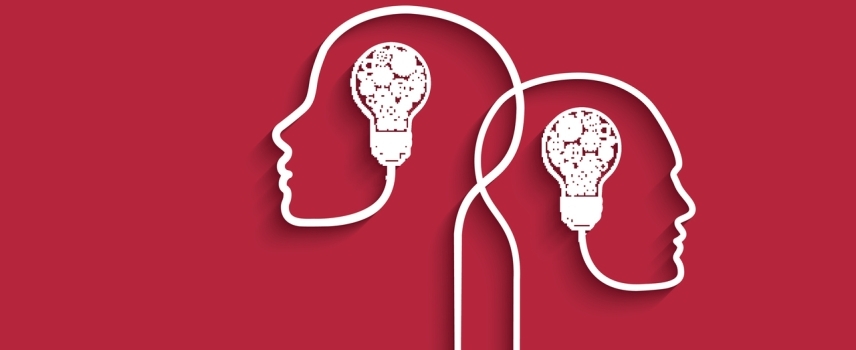From the dawn of human history, our ancestors’ brains evolved to maintain a constant awareness of danger. This keen vigilance was primarily a survival mechanism, allowing them to react quickly to potential threats. Today, this evolutionary remnant is known as negativity bias, and while it no longer serves to protect us from predators, it continues to influence our perceptions and reactions.
Negativity bias can make us anxious, agitated, and pessimistic, particularly in our relationships. This is because it compels us to fixate on perceived slights or potential conflicts, often overlooking the more frequent positive interactions. For example, your spouse comes home late from work, and you meet them with suspicion and irritation instead of concern or empathy. The brain disproportionately weighs this single event as a threat to security and connection, even when the pattern of the relationship is overwhelmingly supportive and stable. This cognitive distortion can create a feedback loop, where anxieties are continuously fueled by negative assumptions, ultimately undermining the trust and satisfaction in the relationship.
Negativity bias stems from a part of the brain called the amygdala, located within the limbic system responsible for processing memory, decision-making, motivation, and emotional reactions. When the amygdala alarm sounds, our bodies react instantly, preparing us to fight, flee, freeze, or fawn. Although today we are far less likely to be at risk of being eaten by predators, our amygdala reacts the same way as if there is a threat to our lives when we experience conflict with a loved one, miss a deadline, or encounter everyday stressors.
This constant state of alertness can lead to chronic stress, which can overstimulate and eventually shrink another part of the brain, the hippocampus. As part of the limbic system, the hippocampus plays a role in controlling emotions and moods. It works with other parts of the brain, like the amygdala and hypothalamus, to help regulate our emotional responses. The hippocampus helps regulate the body’s response to stress, including the release of cortisol, the primary stress hormone.
Chronic heightened anxiety can result in a cycle of continuous stress and heightened anxiety. Our brains operate in two primary states: reactive, influenced by the sympathetic nervous system (SNS), and responsive, influenced by the parasympathetic nervous system (PNS). The SNS and PNS evolved together to keep us alive; they must work in balance. However, if the SNS dominates, it can prevent us from experiencing calm, contentment, and happiness.
Dr. Daniel J. Siegel, a clinical professor of psychiatry at the UCLA School of Medicine and executive director of the Mindsight Institute, proposes a solution to this imbalance. He suggests a practice known as SIFTing to calm the reactive brain and engage the logical brain. This practice leverages neuroplasticity, the brain’s ability to change and reorganize, to help train the brain to remain in a responsive mode more often.
I have summarized the SIFTing technique in the following steps:
S Is for Sensations
The first step involves becoming aware of your bodily sensations. Often, these sensations are subconscious echoes of past experiences manifesting as physical feelings. When you feel triggered, what happens to your body? Does your stomach tighten? Does your jaw clench? Do your cheeks get hot? Recognizing these physical reactions is your initial leap out of mental turmoil.
I Is for Images
Distressing thoughts and emotions often materialize as images within our minds. A triggering event may set off a flurry of these images in your reactive brain. Whether these images stem from actual past events or anticipated fears, they significantly influence your emotions. By becoming aware of and identifying these mental pictures, you gain greater control over them. Question their validity and, if necessary, reframe them.
F Is for Feelings
Acknowledge the emotions that accompany the sensations and images. Remember, emotions aren’t facts; they’re subjective, meaning they aren’t inherently right or wrong—they simply exist. Strive to accept and explore your feelings without judgment. They might provide insight into unconscious beliefs from your past that subconsciously influence your current thoughts about your situation. Naming your feelings can lessen their intensity.
T Is for Thoughts
Observe and identify your thoughts. What narrative are you constructing that contributes to your reaction? What presumptions are you making that may not be accurate? As Byron Katie writes in her book Loving What Is: Four Questions That Can Change Your Life, “I have never experienced a stressful feeling that wasn’t caused by attaching to an untrue thought. Behind every uncomfortable feeling, there’s a thought that isn’t true for us.”
Understanding our brain’s workings and how our sensitivities can trigger a “threat alert” is transformative, especially in the context of building robust, healthy relationships. By demystifying the brain’s reaction to certain stimuli, we learn to respond rather than react. For example, recognizing that a partner’s critical remark triggers a defensive posture due to past experiences allows us to pause and assess the present without the cloudiness of historical emotions. We can then communicate more effectively and resolve conflicts with clarity, thereby nurturing understanding and intimacy in the relationship. Similarly, comprehending our triggers in social settings can lead to increased empathy toward others, as we recognize that their reactions are often rooted in their sensitivities and not merely responses to our actions. This understanding can bridge communication gaps and foster a more compassionate and supportive social environment.
Everyone experiences difficulty accessing their logical brain under extreme stress—it’s a universal human experience. Yet, we are most authentically ourselves when calm and responsive. While our reactive brain serves a survival purpose, we should aim to operate in response mode more regularly for a healthier mind and relationships.
Did you enjoy reading this article?
Once a week I send out a newsletter with new articles and unique content for readers. It is my way of staying in touch with you and giving you free advice based on some important topics.
Click here to sign up for my newsletter.





